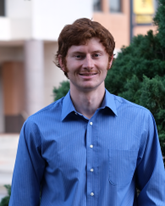USM Graduate Student Admitted to National Neutron and X-ray Scattering School
Tue, 05/30/2023 - 09:44am | By: Van Arnold
 University of Southern Mississippi (USM) graduate student Andrew Bates, a Picayune
MS native, has been admitted to the National School on Neutron and X-ray Scattering
organized by Oak Ridge National Laboratory and Argonne National Laboratory.
University of Southern Mississippi (USM) graduate student Andrew Bates, a Picayune
MS native, has been admitted to the National School on Neutron and X-ray Scattering
organized by Oak Ridge National Laboratory and Argonne National Laboratory.
This two-week camp is designed to provide intensive hands-on training in the use of scattering techniques, including neutron and x-ray scattering. Bates’ thesis will use advanced scattering techniques to study the physical behaviors of semiconductive polymers, which will be used in photovoltaic devices to advance the use of renewable energy.
The National School on Neutron and X-ray Scattering is a highly competitive program that attracts top students from around the world. It is widely recognized as one of the leading training programs in the field and provides participants with the opportunity to learn from the top experts and to gain practical experience in the use of scattering techniques for a wide range of scientific applications.
“Andrew is a highly talented and motivated graduate student in the School of Polymer Science and Engineering, I am proud to have him represent our group and the school at this prestigious program,” said Dr. Xiaodan Gu, Bates’ thesis advisor. “His admission to this program is a testament to his hard work and dedication, and I am confident that he will make the most of this opportunity to expand his knowledge and skills.”
“I am thrilled to have been accepted into the National School on Neutron and X-ray Scattering and am looking forward to learning from experts in the field and collaborating with fellow researchers who are also interested in the structure of polymeric materials,” said Bates. “I plan on using the techniques I learn to study and improve the thermal stability of organic photovoltaic materials, which will hopefully help advance the use of renewable energy technologies.”
X-ray and neutron scattering techniques have become increasingly important tools in the study of materials science, physics, chemistry, biology, and a wide range of other scientific fields. These techniques involve bombarding a sample with beams of x-rays or neutrons and then measuring the scattered radiation to gain information about the structure and behavior of the sample. One of the key advantages of x-ray and neutron scattering techniques is that they provide a non-destructive way to study materials at the atomic and molecular level.
“This is important because many materials, such as proteins, polymers, and ceramics, have complex structures that are difficult to study using traditional microscopy or spectroscopy techniques. X-ray and neutron scattering techniques provide a way to see inside these materials and to understand how they are put together,” said Gu.
During the two-week program covered by the Department of Energy, Bates will have the opportunity to participate in a range of activities, including lectures, workshops, and hands-on training sessions. He will be surrounded by other students with similar interests and have a great opportunity to network with them in the field and to build lasting professional relationships that will be invaluable throughout their careers.